Galapagos Species Database
The Galapagos Species Database shares the information about the species from our Natural History Collections.
Cryptostegia grandiflora
caucho de la India, mirador, alegre viuda, rubber vine, purple allamanda, India rubber vine
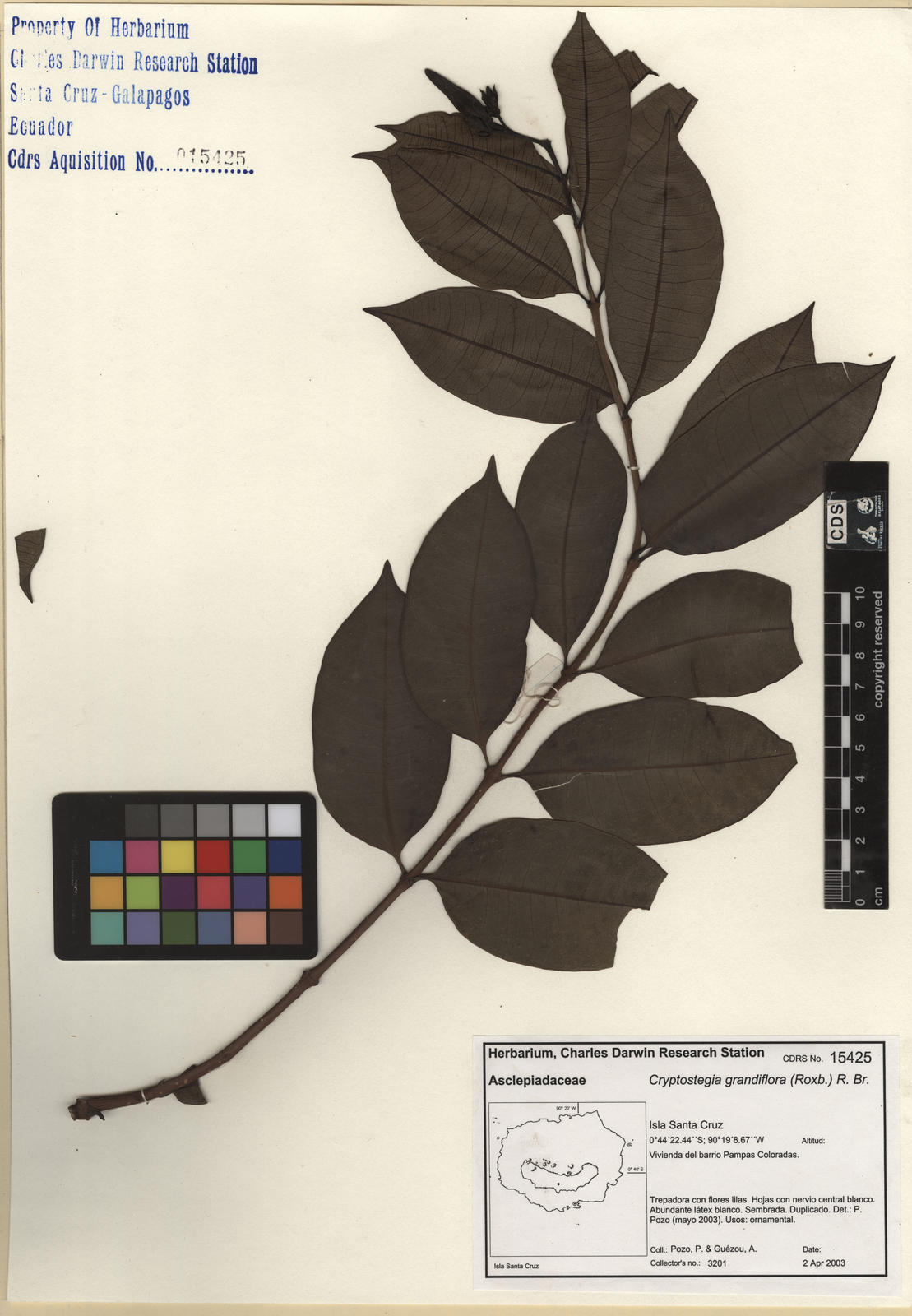
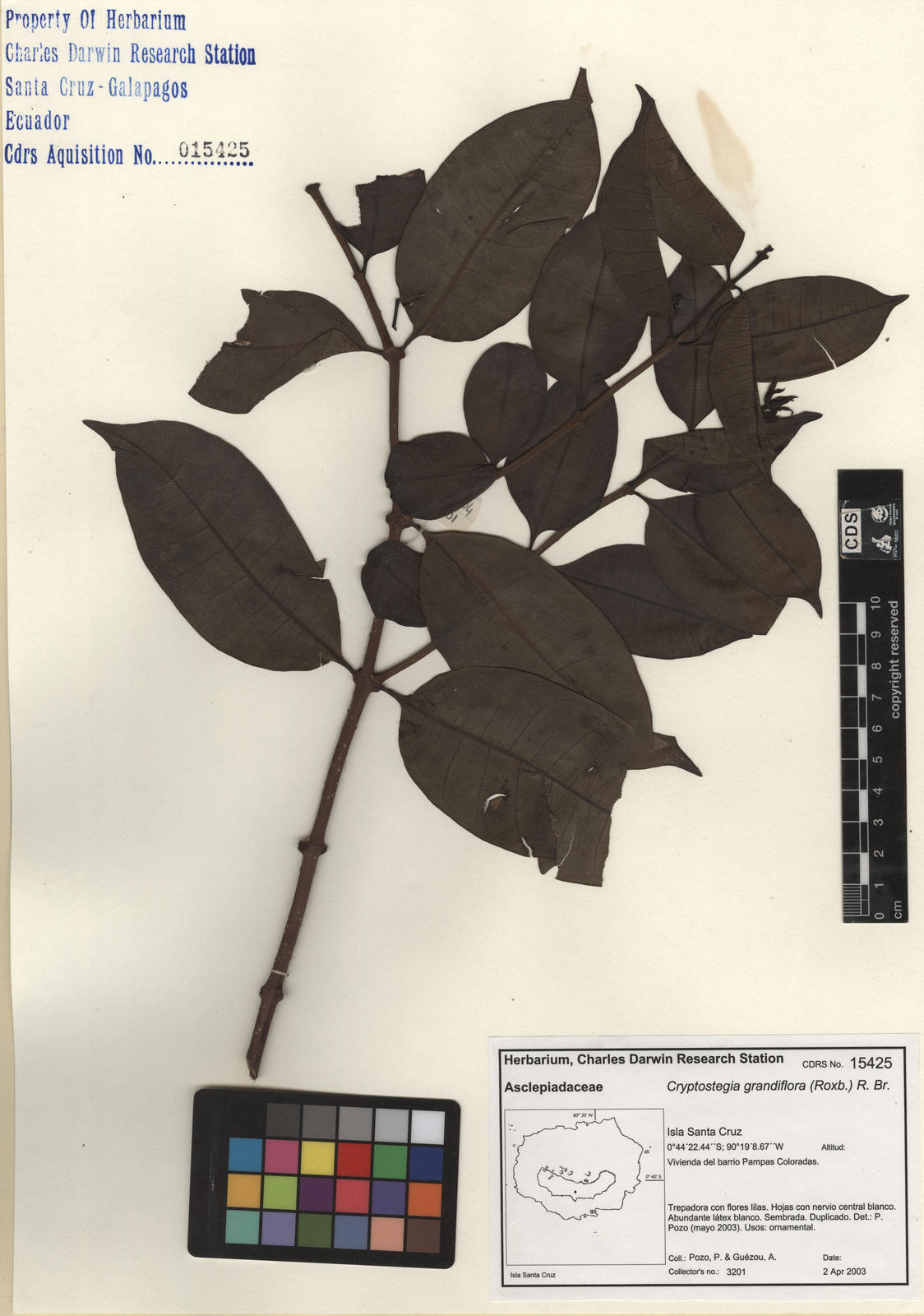
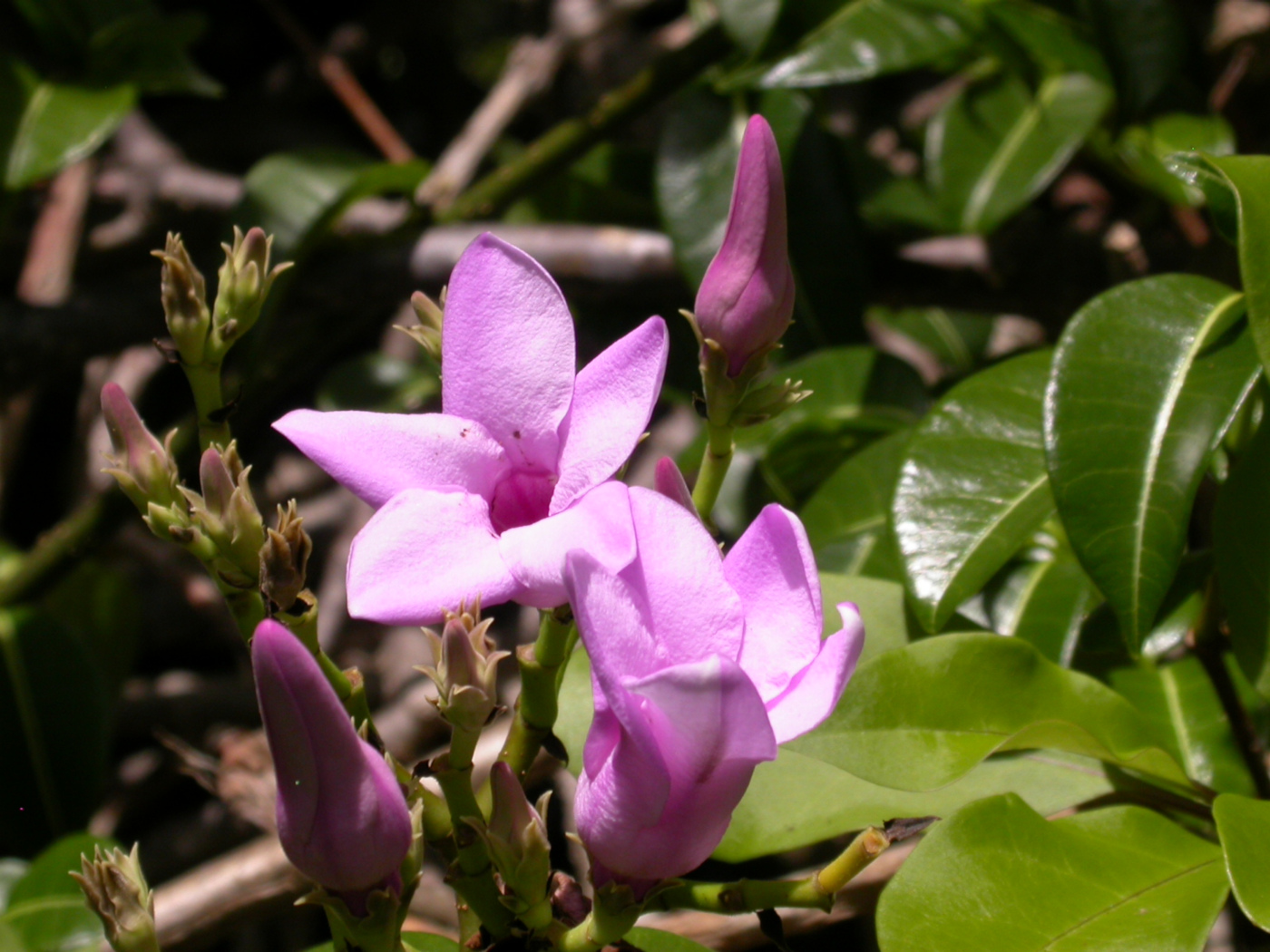
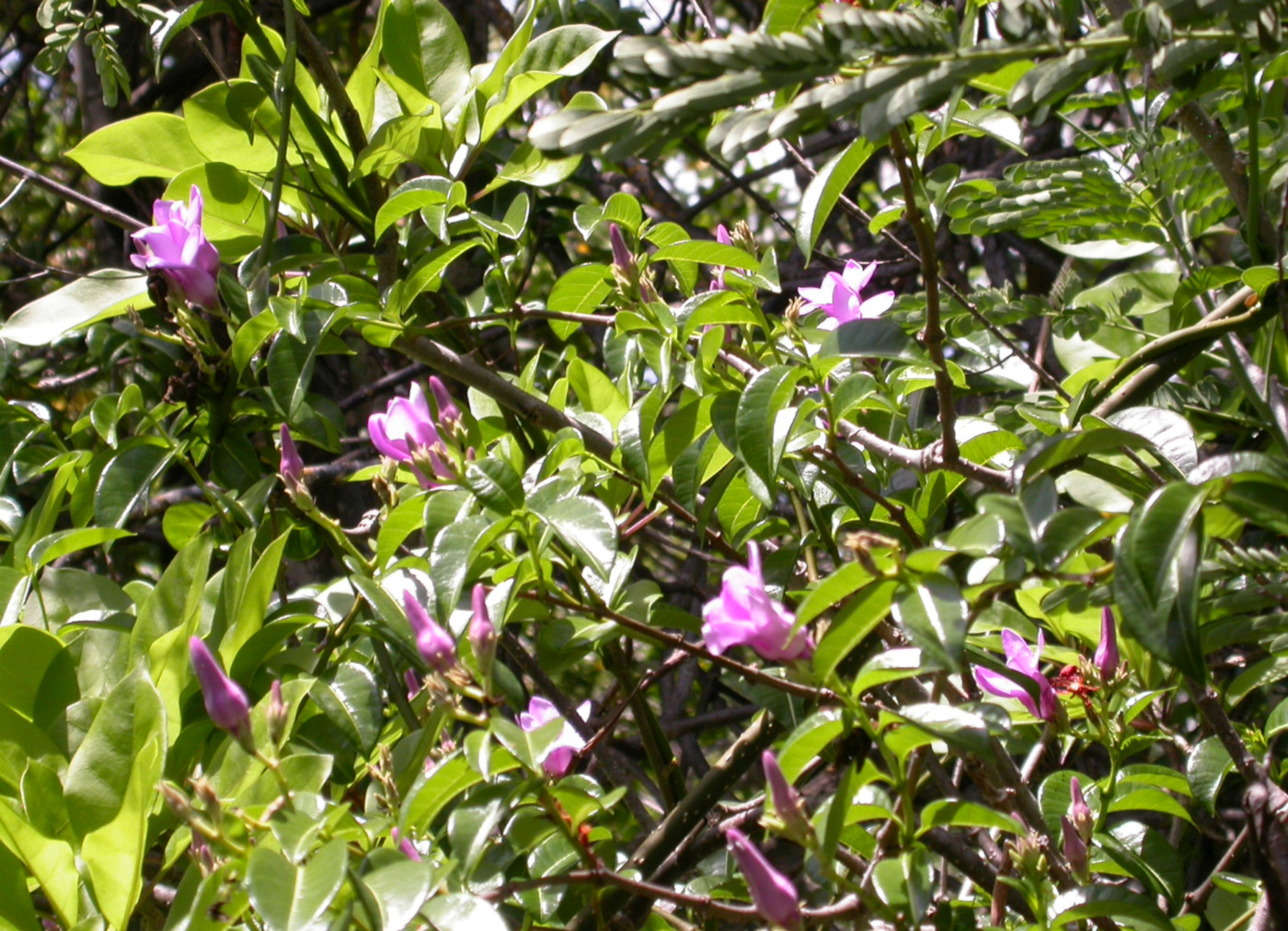
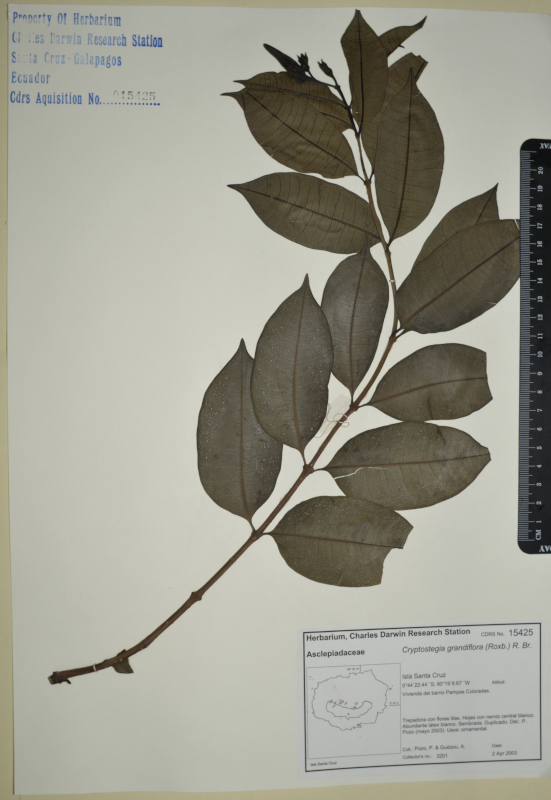

A climbing perennial shrub that produces vertical branches 2 to 3 m tall but can reach 30 m when climbing on other trees. Leaves are simple and oblong. Flowers are large and reddish-purple.
A climbing perennial shrub that produces vertical branches 2 to 3 m tall but can reach 30 m when climbing on other trees. It has large purple flowers and starts flowering in its first year of life. Each fruit can contain between 340 to 840 seeds dispersed by wind over long distances or floating in the water. The seeds do not survive more than a year.
Domain
Eukaryota
Kingdom
Plantae
Phylum
Magnoliophyta
Class
Magnoliopsida (= Dicotyledoneae)
Order
Gentianales
Family
Apocynaceae
Genus
Cryptostegia
Species
grandiflora
Taxon category: Accepted
Syn.: Nerium grandiflorum Roxb. 1st June 2021 family Asclepiadaceae changed to Apocynaceae.
Origin: Introduced - established
Year of first record: 2003
Mode of introduction: Intentional
Introduction Pathway: Intentional
Subpathway: Agriculture/Horticulture
Introduced status: Human dependent
Invasive status: Under watch
Impact in Galapagos: No known problems have been caused so far.
Impact elsewhere: One of most invasive species in Australia. The species forms impenetrable patches, covering all vegetation. It displaces native vegetation and increases the risk of soil erosion. It also prevents access to water for animals, resulting in the loss of grazing areas. Additionally, it is known that the latex produced is toxic.
Control History in Galapagos: 248 plants were controlled (3 adults, the others were juveniles) in Puerto Ayora, which comprised all known individuals. Under the management plan, site monitoring must continue to ensure that the species has been eradicated.
Control methods elsewhere: Manual removal is applicable for seedlings and juveniles in small isolated populations. For adults the use of herbicides aids control.
Known Pest elsewhere: Australia, New Caledonia, La Réunion Island
Preference for an altitude zone in Galapagos: Dry zone
Habitat preferences: Grows in dry and moist forests, roadsides, and rainforest openings at low elevations. Common in disturbed areas where there is water nearby, such as gullies and rivers.
Trophic role: Primary producer
Reproductive biology: Starts flowering in its first year of life. Each fruit can contain between 340 to 840 seeds that are dispersed by wind over long distances or floating in the water. The seeds do not survive more than a year.
Growth form: Shrubs
Distribution origin: Madagascar
Distribution classification: Australian
Map of specimen collection localities or observation records for this species in our collections database.
Distribution: Currently restricted to gardens in Puerto Ayora on Santa Cruz, originally from Madagascar.
- Tropicos.org. (2017) Database of Missouri Botanical Garden. Tropicos.org. Missouri Botanical Garden. 06 Oct 2017 <http://www.tropicos.org
- Schatz, G.E. Phillipson, P. (2010) Catalogue of the Native and Naturalized Vascular Plants of Madagascar. Monogr. Syst. Bot. Missouri Bot. Gard. ined.
- Guézou, A. Trueman, M., Buddenhagen, E., Chamorro, S., Guerrero, A.M., Pozo, P., Atkinson, R. (2010) An extensive Alien Plan Inventory from the Inhabited Areas of Galapagos Plos One/ www.plosone.org. Volume 5/ Issue 4/e10276
You are welcome to download and use the information found in this page, acknowledging its source.
This page should be cited as follows:
"Galapagos Species Database, Cryptostegia grandiflora", dataZone. Charles Darwin Foundation, https://datazone.darwinfoundation.org/en/checklist/?species=1898. Accessed 13 August 2025.

Dispersal propagule: Seed
Viento, Agua